Description
ISBN-10: 0078024269
ISBN-13: 9780078024269 978-0078024269
Chapter 05
Membrane Structure and Function
Multiple Choice Questions
- A major chemical that regulates the fluidity of animal cell membranes by stiffening the membrane at higher temperatures and preventing the membrane from freezing at lower temperature is
A. cholesterol.
B. lipid in nature.
C. a steroid.
D. All of the choices are correct.
All are true. Cholesterol is lipid in nature and a steroid. It regulates the fluidity of animal cell membranes.
Bloom’s Level: 2. Understand
Learning Outcome: 05.01.01 Distinguish between the different structural components of membranes.
Section: 05.01
Topic: Plasma Membrane
- Proteins in a membrane are
A. peripheral if they are on the inside surface held in place by the cytoskeleton.
B. integral if they are embedded in the membrane and protrude from both surfaces of the bilayer.
C. integral if they protrude from only one surface of the bilayer.
D. All of the choices are correct.
All of the choices are correct. Proteins in a membrane are peripheral if they are on the inside surface held in place by the cytoskeleton, integral if they are embedded in the membrane, integral if they protrude from only one surface of the bilayer.
Bloom’s Level: 2. Understand
Learning Outcome: 05.01.03 Describe the diverse role of proteins in membranes.
Section: 05.01
Topic: Plasma Membrane
- Which of the following protein functions is not correctly associated with the correct integral protein?
A. carrier proteins-facilitate passage of molecules through the membrane
B. enzymatic proteins-catalyze a specific reaction
C. channel proteins-block the activity of carrier proteins
D. cell recognition proteins-recognize pathogens
Bloom’s Level: 2. Understand
Learning Outcome: 05.01.03 Describe the diverse role of proteins in membranes.
Section: 05.01
Topic: Plasma Membrane
- Active transport
A. requires an input of ATP.
B. is involved in diffusion.
C. occurs in osmosis and facilitated transport.
D. All of the choices are correct.
Bloom’s Level: 1. Remember
Learning Outcome: 05.03.01 Explain how active transport moves substances across a membrane.
Section: 05.03
Topic: Active Transport
- The channel protein that accounts for why water can cross a membrane more quickly than expected is
A. ATP synthetase.
B. aquaporin.
C. the sodium-potassium pump.
D. integrin.
The newly discovered membrane channel protein that accounts for the quick movement of water across a membrane is aquaporin.
Bloom’s Level: 1. Remember
Learning Outcome: 05.01.03 Describe the diverse role of proteins in membranes.
Section: 05.01
Topic: Plasma Membrane
- Which of the following is true with respect to plant cell walls?
A. They contain n-acetylglutamic acid.
B. They all have secondary cell walls to some extent.
C. There is a greater amount of cellulose in secondary cell walls than in primary cell walls.
D. Lignin is found in primary cell walls of plants.
Bloom’s Level: 1. Remember
Learning Outcome: 05.04.03 Explain the role of plasmodesmata in plants.
Section: 05.04
Topic: Cell Wall
- In a phospholipid bilayer, the
A. phosphate groups are hydrophobic.
B. fatty acid tails are ionized.
C. fatty acid tails are hydrophilic.
D. proteins are located only between the two layers.
E. phosphate heads are oriented toward the exterior of the cell or toward the cytoplasm.
Bloom’s Level: 1. Remember
Learning Outcome: 05.01.01 Distinguish between the different structural components of membranes.
Section: 05.01
Topic: Plasma Membrane
- Which statement is true about the plasma membrane?
A. The proteins make up the matrix of the membrane.
B. The model can be likened to a sandwich where phospholipids are like the bread and proteins are like the filling.
C. The fluid nature of the membrane is regulated by flip-flopping of the phospholipids from one side of the membrane to the other.
D. Proteins and phospholipids can move sideways within the plane of the membrane.
Bloom’s Level: 1. Remember
Learning Outcome: 05.01.01 Distinguish between the different structural components of membranes.
Section: 05.01
Topic: Plasma Membrane
- Which statement is NOT true about the proteins in the plasma membrane?
A. Proteins may be attached to the inner surface of the plasma membrane.
B. The hydrophobic portion of a protein is embedded within the membrane.
C. Some peripheral proteins are connected to cytoskeletal filaments.
D. Integral proteins are responsible for membrane functions.
E. Glycoproteins contain carbohydrate chains that are oriented toward the inner surface of the membrane.
Bloom’s Level: 2. Understand
Learning Outcome: 05.01.03 Describe the diverse role of proteins in membranes.
Section: 05.01
Topic: Plasma Membrane
- Which phrase does NOT describe one of the functions of proteins of the plasma membrane?
A. forming a channel through the membrane
B. initiating the replication of the genetic material
C. binding to a substance to carry it through the membrane
D. acting as a receptor for substances external to the cell
E. increasing the rate of a chemical reaction
Bloom’s Level: 2. Understand
Learning Outcome: 05.01.03 Describe the diverse role of proteins in membranes.
Section: 05.01
Topic: Plasma Membrane
- Red blood cells come in many “blood types” including type A, type B, type AB, type O [lacking proteins A and B], Rh positive, and Rh negative [lacking Rh+] and many others. If blood is transfused, the recipient detects any new or “foreign” proteins. These blood type proteins are
A. in the plasma where they have been secreted by the red blood cells.
B. inside the red blood cell cytoplasm.
C. on the outer surface of the red blood cell membrane.
D. evenly distributed throughout the cell contents and plasma.
E. in the red blood cell nucleus.
These blood type proteins are on the outer surface of the red blood cell membrane.
Bloom’s Level: 2. Understand
Learning Outcome: 05.01.03 Describe the diverse role of proteins in membranes.
Section: 05.01
Topic: Plasma Membrane
- Whether a molecule can cross the plasma membrane depends upon
A. the size of the molecule.
B. the shape of the molecule.
C. the chemical properties of the molecule.
D. the charge of the molecule.
E. All of the choices are correct.
All of the choices are correct. Whether a molecule can cross the plasma membrane depends upon the size of the molecule, the shape of the molecule, the chemical properties of the molecule and the charge of the molecule.
Bloom’s Level: 1. Remember
Learning Outcome: 05.02.01 Compare diffusion and osmosis across a membrane.
Section: 05.02
Topic: Passive Transport
- If a cell is placed in a hypotonic solution, which will occur?
A. Salts will move into the cell from the surrounding solution.
B. Water will move into the cell from the surrounding solution.
C. Salts will move out of the cell into the surrounding solution.
D. Water will move out of the cell into the surrounding solution.
E. None of the choices will occur.
If a cell is placed in a hypotonic solution, water will move into the cell from the surrounding solution.
Bloom’s Level: 3. Apply
Learning Outcome: 05.02.03 Differentiate among the effects of hypotonic, isotonic, and hypertonic solutions on animal and plant cells.
Section: 05.02
Topic: Passive Transport
- Which is the best definition of osmosis?
A. The movement of molecules from an area of their higher concentration to an area of their lower concentration.
B. The movement of water across a semi permeable membrane from an area of higher water concentration to an area of lower water concentration.
C. The movement of molecules from an area of their lower concentration to an area of their higher concentration.
D. The movement of water across a semi permeable membrane from an area of lower water concentration to an area of higher water concentration.
E. The movement of a substance against its concentration gradient through the release of energy from ATP.
Bloom’s Level: 1. Remember
Learning Outcome: 05.02.01 Compare diffusion and osmosis across a membrane.
Section: 05.02
Topic: Passive Transport

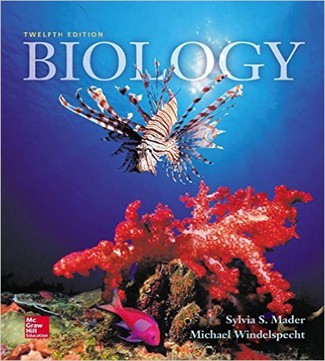
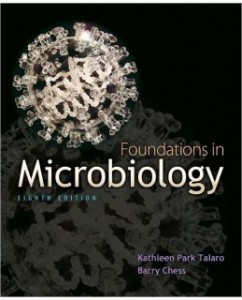
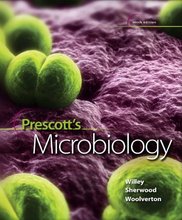
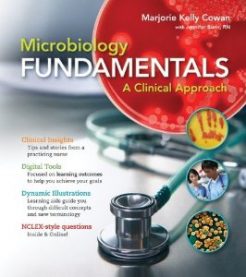
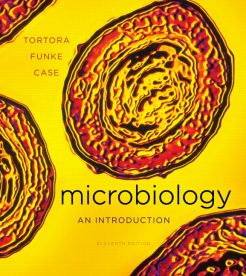

Reviews
There are no reviews yet.